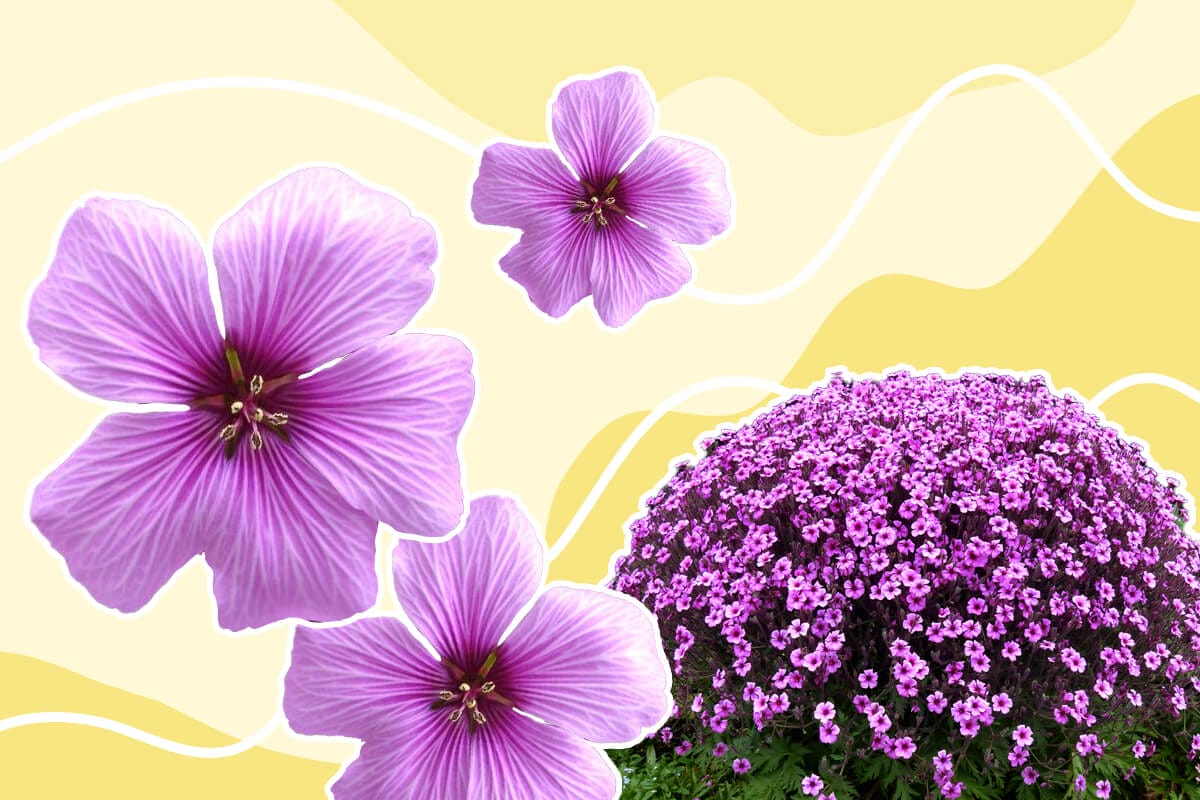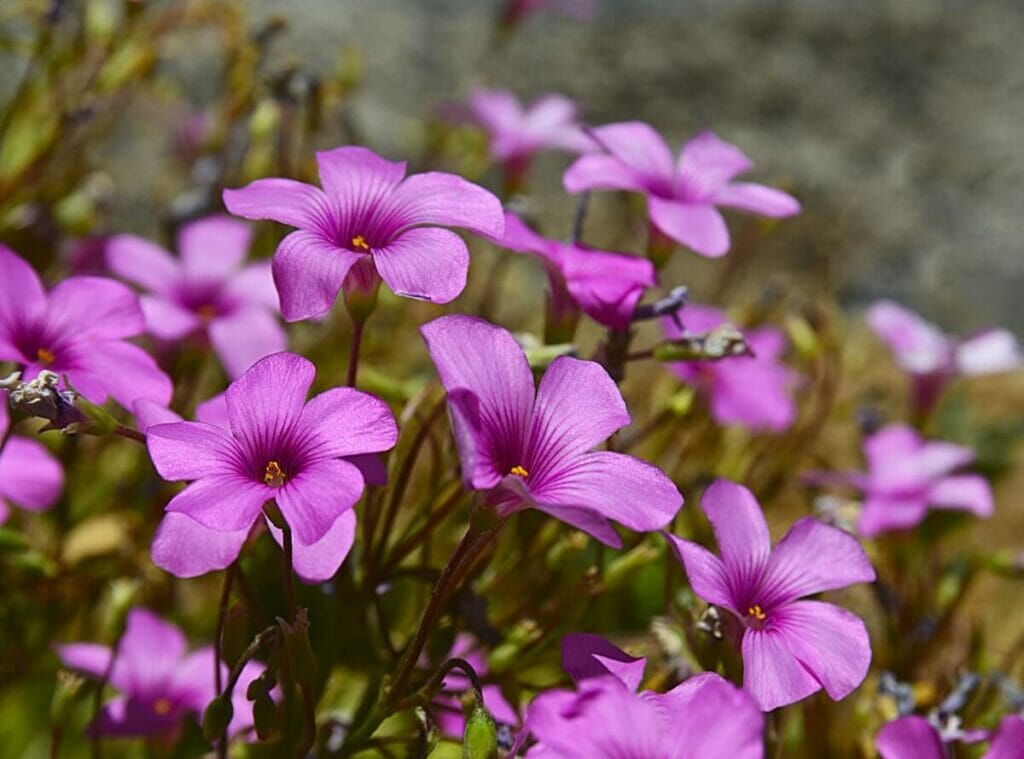How to Grow Geranium Maderense Flowers in Your Garden
As the largest member of the Geranium genus, Geranium maderense knows how to make a statement in the garden. Its beautiful, toothed leaves and many pink flowers light up landscapes throughout the year. And as a bonus, I find them incredibly easy to care for! If you’d like to add one of these geraniums to your garden, keep reading as we take you through everything you need to know about how to grow and care for Geranium maderense flowers at home.

Key Takeaways:
| Botanical Name: | Geranium maderense |
| Also Known As: | Madeira cranesbill, giant herb-Robert, Madeira Island geranium |
| Hardiness Zones: | USDA hardiness zones 8-10 |
| Flowering Months: | April through September |
| Growing Difficulty: | Easy to grow |
| Type of Plant: | Biennial, sometimes a short-lived perennial |
| Light Requirements: | Ideally, full sun or part shade; can tolerate full shade |
| Temp & Humidity: | Prefers temperatures ranging from 50ºF to 80ºF with moderate to high humidity. Can survive temperatures as low as 23ºF. |
| Water | Water every few weeks in the summer when the top few inches of soil are dry; drought-tolerant |
| Soil Preferences: | Well-drained, neutral to slightly acidic, not particular about texture |
| Feeding: | Apply a vegetative fertilizer in the spring of the first year and a flowering fertilizin in the spring of the second year |
| Growth Expectations: | Up to five feet tall and five feet wide at maturity |
| Toxicity: | Non-toxic to humans and pets |
How to Grow Geranium maderense

Best Locations to Plant
The Madeira geranium can thrive in numerous locations. The main thing to take into consideration is its large size.
One option is to use this plant as a focal plant in garden beds. Just make sure you give it enough area to grow over time.
Another option is to plant Madeira cranesbill in a dappled forest understory or forest edge. This environment mimics the forest that once covered the plant’s native Madeira.
Best Times of Year to Plant
Early spring after the last frost is the best time to plant. If your area doesn’t receive frosts, plant during March or April.
If your plant has self-seeded, seedlings will emerge in the spring.
Growing From Seed vs. Transplanting

You may grow Madeira geraniums from both seed and transplants. However, transplants are an easier and more reliable method.
Seeds are slow to germinate and require cool conditions to do so. It’s not uncommon for seeds to take multiple weeks to germinate.
Transplants are a surefire way to produce mature plants. If you use transplants, set the potted plants outside for several days before planting. This will help limit transplant shock.
What to Do Before Planting
Remember that these plants are the biggest type of geranium! You’ll need to ensure they have at least a five-foot area to expand.
Best Soil Types
Fortunately, these plants aren’t very particular when it comes to soil. They can tolerate clay, sand, loam, and other soil types.
However, they cannot tolerate wet soil. Well-drained soil is essential to a healthy plant.
You should also ensure that soil pH is neutral or slightly acidic. If you need to lower the pH, add a bit of sulfur.
How to Plant
Planting Madeira cranesbill is easy once you have a proper site.
Before you plant, examine the soil. If the soil seems compacted or wet, mix in some compost to improve drainage.
If the site you’ve chosen has other plants, consider moving them. Since Madeira cranesbill plants grow quickly, they can outcompete other plants for sun and nutrients.
Once your site is all set, dig a hole that is the size of the transplant’s root ball. Gently place the plant in the hole, cover it with soil, and water well.
While mature plants don’t need much water, check your new transplant regularly for the first month. If the plant begins to wilt or the top few inches of soil is dry, water.
Light Preferences

Madeira geraniums grow best with at least six hours of bright sun each day. Their ideal conditions are six to eight hours of morning sun.
However, you can grow these plants in full shade. If you plant in full shade, plants may produce fewer flowers.
Temperature & Humidity Preferences
These plants cannot handle temperatures below 23ºF. If you live in an area that experiences frost, you’ll need to bring your plants inside or cover them.
During the spring and summer, these plants prefer temperatures between 50-80ºF and moderate to high humidity.
They can handle temperatures above 80ºF. However, they may suffer if they receive afternoon sun coupled with high temperatures.
How to Care for Geranium Maderense

Watering
Madeira cranesbill can tolerate moderate drought, so you don’t have to worry about watering every week.
During dry periods, aim to deeply water your plant every two to three weeks. Plants in full sun will require more water than plants in full or part shade.
These plants aren’t picky about the type of water, so tap water is fine.
How, When, and Why to Fertilize
Geranium maderense doesn’t require much fertilizer, but it will benefit from light doses. Be careful not to apply too much fertilizer, as this can cause brittle stems.
During the first year of growth, fertilize plants once in the spring. Use a fertilizer designed for vegetative growth.
In the second year of growth, switch to a fertilizer designed for flowers. Apply a low dose of fertilizer once in the spring and again in the summer.
When and How to Prune

While you may be tempted to remove drooping leaf petioles, avoid doing so. These leaf stalks help prop up the top-heavy plant as it grows.
While it’s not technically pruning, another thing to think about is seedlings. Madeira cranesbill is known for the ability to readily self-seed. If you don’t want new plants to grow, the seedlings are easy to remove by hand.
Propagation
Since Madeira cranesbill often self-seed, propagating is easy. Simply let the plants go to seed, and then watch the seeds germinate and grow. If you’d like, you can move small seedlings to other areas of your garden.
If you’d like a bit more of a hands-on approach, collect seed pods. After you’ve removed the seeds, sow them in containers filled with potting mix.
Remember that these seeds can take a few weeks to germinate. As you wait, keep the seeds moist and cool.
Another option is to propagate plants via basal cuttings. However, this method is a bit trickier than producing new plants from seed.
Overwintering

According to UC Davis, these plants can survive winter temperatures as low as 23ºF. If you are expecting frost, it’s a good idea to cover your plant with a frost blanket and mulch the base of the plant.
If your plant is in a container, you may move it to a sheltered location during the winter. However, don’t move it to a warm house, as this can shock your plant. Instead, keep it in a cool area like a laundry room or garage.
Repotting

Since these plants grow quickly, you should start with a large pot. Opt for a container that is at least 15 inches in diameter.
If you’re starting with small transplants, you will need to repot them into a larger container. Try to do this in the spring when plants begin actively growing.
Deadheading
Removing old flowers will encourage new flowers. You can remove individual blooms or cut back entire flower stems.
Common Geranium Maderense Problems

Fortunately, these plants aren’t impacted by many garden diseases or pests. However, you should keep an eye out for the following.
Powdery Mildew
If you notice your Geranium maderense plant is coated in a white powder, it may be infected with powdery mildew. This is a common issue caused by several fungi.
Powdery mildew is most common in wet areas with poor airflow.
If you suspect your plant has powdery mildew, prune off the infected leaves and flowers.
To avoid future problems, allow space between plants to allow for good airflow.
Slugs and Snails
Slugs and snails feed on foliage and flowers. While they don’t tend to severely damage larger plants, they can kill seedlings.
If you notice these pests, pick them off and place them in a bucket of soapy water.
You can also place a band of diatomaceous earth around the base of your plant. This will stop the pests from reaching your plant. However, you will need to reapply after rain.
Essential Tools for Geranium Maderense Care
Here’s a list of tools we recommend for taking care of your Madeira cranebill plant.
- Plastic container
- Cactus mix or a coarse homemade soil blend with perlite and sand
- A watering can
- A high-phosphorus fertilizer
- Sharp shears or scissors for clipping and pruning
- Rubbing alcohol and disinfectant spray to sterilize your shears
- Fungicide for any fungus-related issues
Wrapping Up
If you’re looking for a show-stopping geranium, you can’t do much better than Geranium maderense. As long as you provide the proper care, this plant will delight with its gorgeous foliage and stunning flowers.
Briana holds a B.S. in Plant Sciences from Penn State University. She manages a small market garden where she grows vegetables and herbs. She also enjoys growing flowers and houseplants at home.

